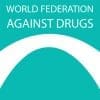In 2016, roughly 64,000 people died from drug overdoses, and opioids accounted for nearly two-thirds of those deaths. It is difficult to comprehend the full scope and magnitude of the opioids crisis, its causes, and its consequences—for families, communities, and workplaces. But better understanding the challenges it poses is a necessary first step to informed public policy. This report gathers an unprecedented amount of data on the opioids crisis. Key findings include:
Opioid overdose deaths continue to rise at an alarming rate
- In 2016, approximately 64,000 people died from drug overdoses, and opioid overdose deaths alone accounted for nearly two-thirds of them.
- Since 1999, opioid-related deaths have quadrupled, and between 2015 and 2016, the number of deaths from fentanyl and other synthetic opioids more than doubled.
Opioid-related deaths are shifting to younger demographic groups, typically white, single or divorced, and with relatively less formal education
- In 2015, of the population age 25 and older, 61 percent of Americans were married, and together with widowed Americans made up 68 percent of the population, but accounted for only 28 percent of opioid overdose deaths. In contrast, never-married and divorced Americans made up about 32 percent of the population, but accounted for 71 percent of all opioid overdose deaths.
- In 2015, among those age 25 and older, 33 percent had a bachelor’s degree or higher, but they accounted for only 9 percent of all opioid overdose deaths. In stark contrast, 40 percent had no more than a high school diploma or equivalent, but they accounted for 68 percent of opioid overdose deaths.
The oversupply and abuse of legal prescription pain relievers is at the heart of the crisis
- In the 1960s, four out of five heroin addicts began with heroin, but by the 2000s three out of four heroin addicts began either with prescription opioids obtained legally through a doctor’s prescription or illegally from someone else’s prescription. Drugs freely given by friends and family constitute over 40 percent of prescription pain relievers taken by abusers of those drugs.
- In 2016, nearly 215 million prescriptions for opioids were filled in the United States. Data analyzed by the CDC show that 61.8 million patients received those prescriptions, or 19.1 percent of the U.S. population.
- In the median U.S. county, physicians prescribed an amount of opioids in 2015 equivalent to a nearly two-week supply of oxycodone for every resident.
- A majority of opioid overdose deaths are a result of combining opioids or combining them with other central nervous system agents, including benzodiazepines (often used to treat anxiety and sleep problems).
Illegally obtained opioids have rapidly become a major problem
- As prescription rates for opioids have declined, there has been a growing threat from illegal opioids, such as heroin and synthetic opioids like fentanyl (which is 25 to 50 times more powerful than heroin). Fentanyl is often disguised in a substance that resembles heroin or in counterfeit prescription pills.
- Fentanyl seizures by law enforcement increased by a factor of six between 2014 and 2016.
Hospitalization for opioids abuse has also risen across geographic, demographic, and socioeconomic groups
- Heroin use and opioid prescription misuse resulting in emergency room visits have been rising in many states and their major metropolitan areas.
- As with prescribing rates, opioid-related inpatient hospital stays are concentrated in Appalachia, the West, and New England.
- In 2014, those aged 25-64 had the highest rates of inpatient stays, and lower income individuals and those in the large metropolitan areas had higher rates of stays than other groups from 2005-2014.
The opioid crisis will affect the next generation for years to come
- Reports of young children overwhelming foster care systems are pouring out of states like Ohio, which since 2010 have witnessed an increase of nearly one-fifth in the number of children placed with relatives or in foster care.
- Between 2009 and 2014, the percent of children nationwide with parental alcohol or drug use as a factor in out-of-home placement rose from 29.4 percent to 35.1 percent.
- New England and the South have the highest rates of neonatal abstinence syndrome (NAS) per 1,000 hospital births. In 2013, according to a CDC study, NAS incidence per 1,000 hospital births was highest in Vermont (33.3) and West Virginia (33.4). The recent rise in NAS has been fueled by opioid addiction.




